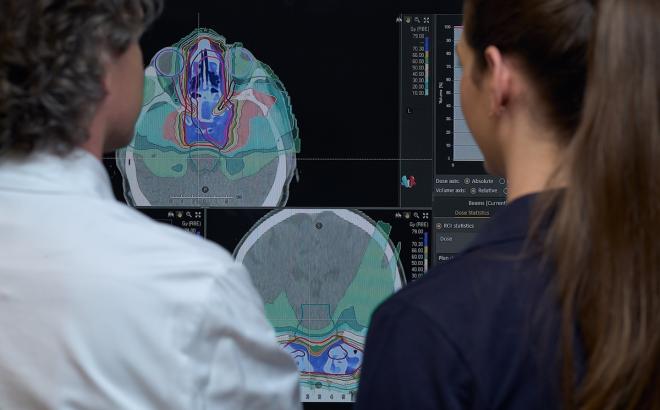Revolution of Water Quality Analysis: Bringing DNA/RNA Diagnostics into the 21st Century
A global evaluation of more than 1,100 publications from the last 30 years demonstrates the successful use of DNA/RNA analysis to conduct scientific studies on hygienic water quality and safety based on faecal microbiological indicators and intestinal pathogens.
Accordingly, the international team of the comprehensive meta-study defines this important field as the new scientific discipline of "Genetic Faecal Pollution Diagnostics (GFPD)". This includes methods such as DNA/RNA-PCR analysis and sequencing. The importance of this new discipline is also underlined by an ongoing worldwide survey on the use of GFPD in the daily practice of water management by authorities, organizations, and institutes. The results of these two studies will play a central role at several international conferences in the coming months and will help to put the enormous potential of modern molecular genetic methods even more at the service of water analysis and hygiene.
Microbiological faecal contamination of water has been analysed in the same way for over 100 years: Bacterial cultures are prepared. This standardized method, which is used worldwide, can detect microorganisms in the intestinal flora after 1-2 days, providing evidence of faecal contamination. The use of molecular genetic methods in water hygiene now allows a significant expansion of the scientific possibilities for hazard and risk analysis of faecal microbiological contamination of water and water resources. An international team led by Prof. Andreas Farnleitner from the Karl Landsteiner University of Health Sciences (KL Krems) and the TU Wien is now advocating the increased use of these possibilities for the hygienic assessment of faecal microbiological contamination. He has underlined this commitment with a study that has attracted worldwide attention and other activities.
Everything in Flow
"The influence of modern molecular biological technologies is of course also noticeable in water analysis," says Prof. Farnleitner, who heads the ICC Water & Health* at KL Krems and TU Wien. "However, the extent to which this is already the case in the field of scientific detection and characterization of faecal microbiological contamination was previously unknown. Together with a global team, we have therefore analysed more than 1,100 studies from the last 30 years and surveyed just that."
The study, published in FEMS Microbiology Reviews, shows that GFPD is already widely and diversely used in scientific investigations. "In fact", says Prof. Farnleitner, "it can be said that GFPD has already revolutionized the identification and source tracking of faecal pollution in water resources and is also setting new standards in risk analysis (i.e., determining the probability of infection and disease from water use)." Although the study shows that GFPD was first used in the 1990s, its use has really taken off since the 2000s and is growing at a rapid pace.
Prof. Farnleitner explains the potential of the GFPD: "For the first time, it is possible to distinguish between animal and human faecal pollution – a methodological quantum leap for targeted safety management of water resources." In fact, GFPD methods have already been used to characterize and identify the source of faecal contamination in 649 of the 1,123 studies reviewed. This is an impressive demonstration of acceptance and widespread use. The research team sees an extremely high application potential – also supported by the technology of biobanking (i.e. long-term storage of DNA/RNA samples at -80°C) – in the possibility of "event-related" supplementation of cultivation-based standard examinations.
Global Application
Prof. Farnleitner and his team at ICC Water & Health* are now going one step further in their survey of the global use of GFPD in the field of water hygiene: together with the IWA (International Water Association) Health-Related Water Microbiology Specialist Group and the Global Water Pathogens Project, they have launched a worldwide survey. In addition to scientific studies and publications, the survey will examine the current use of genetic methods ("PCR and DNA/RNA sequencing") for microbiological water quality testing in everyday water management practice. It is aimed at institutes, (regulatory) authorities and other organisations involved in water hygiene. Prof Farnleitner comments: "There is still a lot of space for improvement when it comes to the use of GFPD in legally required water testing. There is also a lack of simple principles, such as a sufficient definition of suitability for use and global standards."
The survey, which concludes its data collection phase this month, will be accompanied by a series of national and international conferences and workshops. A workshop chaired by Prof. Farnleitner at the IWA World Water Conference in Toronto, Canada, in August 2024 (entitled Use of genetic methods for microbial water quality testing: a global, water industry-wide survey) will be highly visible internationally. At the IWA Water Micro in the Netherlands (2025), the survey will be officially concluded with another workshop and the results will be published for the international community.
Original publication: Have genetic targets for faecal pollution diagnostics and source tracking revolutionized water quality analysis yet? K. Demeter, R. Linke, E. Ballesté, G. Reischer, R. E. Mayer, J. Vierheilig, C. Kolm, M. E. Stevenson, J. Derx, Alexander K.T. Kirschner, R. Sommer, O.C. Shanks, A. R. Blanch, J. B. Rose, W. Ahmed, A. H. Farnleitner. FEMS Microbiology Reviews , 2023, 47 , 1–36.




